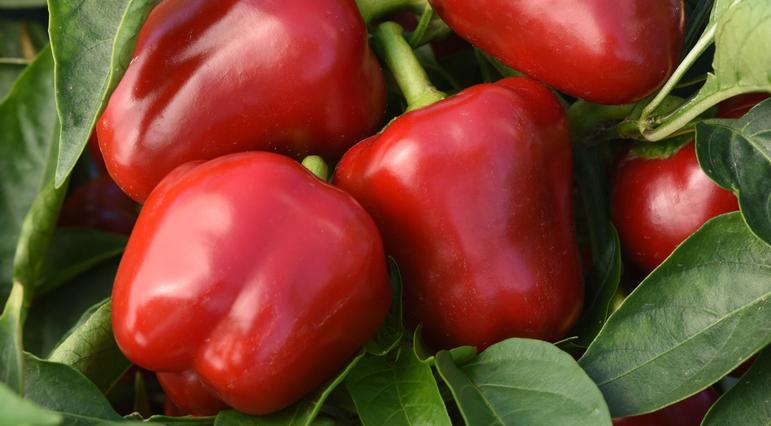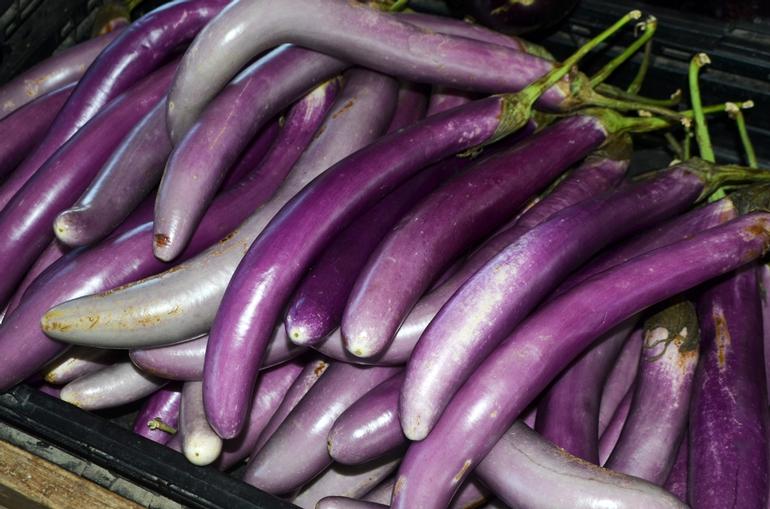Crops for a Fall Vegetable and Herb Garden

A fall garden gives you another opportunity to grow vegetables and herbs for your family, extending food production several more months, even year-round in warm climates. There are advantages to growing in fall. Soil temperatures are still warm for fast germination, but the air temperature will be cooling down. There is usually less weed competition and fewer insect problems. Crops which tend to bolt are less likely to do so at this time of year. Depending on what part of the country you live in, a fall vegetable garden may be started in late summer to harvest in the fall, or you may start in the fall to harvest even into the winter. The former is probably true of most regions while areas with warmer climates need a later start for cool season crops.
Seed packet information and planting calendars for your hardiness zone can help you decide what and when to plant for a fall vegetable and herb garden. The following chart shows vegetable planting information for the major growing zones in the U.S., hardiness zones 4 to 10. Information such as daily sun and fertilizer needs are included since this information is often not available all together. Factors such as climate and soil type can affect a plant’s fertilizer needs, and in some situations plant requirements may be less. The family designation is included to assist with crop rotation in successive years.
Vegetables for Fall Planting
|
Plant |
Family |
Zones |
Sun Needs |
Fert Needs |
|
Arugula |
Brassicaceae |
6,7,8,9,10 |
4+ hours |
Light |
|
Beans |
Fabaceae |
6,7,8,9,10 |
6+ hours* |
Moderate |
|
Beets |
Chenopodiaceae |
4,5,6,7,8,9,10 |
6+ hours |
Moderate |
|
Broccoli |
Brassicaceae |
4,5,6,7,8,9,10 |
4+ hours |
Heavy |
|
Brussel Sprouts |
Brassicaceae |
8,9,10 |
4+ hours |
Heavy |
|
Cabbage |
Brassicaceae |
7,8,9,10 |
4+ hours |
Heavy |
|
Carrots |
Apiaceae |
4,5,6,7,8,9,10 |
6+ hours |
Moderate |
|
Cauliflower |
Brassicaceae |
7,8,9,10 |
4+ hours |
Heavy |
|
Celery |
Apiaceae |
8,9,10 |
6+ hours |
Heavy |
|
Collards |
Brassicaceae |
4,5,6,7,8,9,10 |
4+ hours |
Light |
|
Corn |
Poaceae |
10 |
Full Sun |
Heavy |
|
Cucumber |
Cucurbitaceae |
7,8,9,10 |
Full Sun |
Heavy |
|
Eggplant |
Solanaceae |
9,10 |
Full Sun |
Heavy |
|
Kale |
Brassicaceae |
4,5,6,7,8,9,10 |
4+ hours |
Heavy |
|
Kohlrabi |
Brassicaceae |
7,8,9,10 |
6+ hours |
Heavy |
|
Lettuce |
Asteraceae |
4,5,6,7,8,9,10 |
4+ hours |
Moderate |
|
Mustard |
Brassicaceae |
7,8,9,10 |
4+ hours |
Light |
|
Onion, bunching |
Liliaceae |
7,8,9,10 |
6+ hours* |
Moderate |
|
Peas |
Fabaceae |
5,6,7,8,9,10 |
6+ hours* |
Light |
|
Peppers, bell |
Solanaceae |
9,10 |
Full Sun |
Heavy |
|
Potato, Irish |
Solanaceae |
7,8,9,10 |
Full Sun |
Moderate |
|
Pumpkin |
Cucurbitaceae |
9,10 |
Full Sun |
Heavy |
|
Radish |
Brassicaceae |
7,8,9,10 |
6+ hours* |
Moderate |
|
Rutabaga |
Brassicaceae |
4,5,6,7,8,9,10 |
Full Sun |
Moderate |
|
Spinach |
Chenopodiaceae |
4,5,6,7,8,9,10 |
6+ hours* |
Heavy |
|
Squash |
Cucurbitaceae |
7,8,9,10 |
Full Sun |
Heavy |
|
Strawberry |
Rosaceae |
8,9,10 |
Full Sun |
Heavy |
|
Swiss Chard |
Chenopodiaceae |
6,7,8,9 |
6+ hours* |
Light |
|
Tomato |
Solanaceae |
9,10 |
Full Sun |
Heavy |
|
Turnips |
Brassicaceae |
4,5,6,7,8,9,10 |
6+ hours |
Light |
*These plants have been found by some gardeners to grow with considerably less sun.
Add Herbs to Your Fall Garden
There are also many herbs that can be grown in the fall - in fact, the majority of them. Some can survive even extreme cold and many are perennial. Herbs with some of the best cold tolerance include:
- Chives
- Fennel
- Lemon Balm
- Lovage
- Mint
- Oregano
- Parsley
- Sage
- Salad Burnet
- Tarragon
- Thyme
- Winter Savory
Herbs generally have a low demand for fertilizer, and many can get by with only 4 hours of sun daily. With all the abundant possibilities for fall gardening, you can continue to enjoy gardening while making a substantial healthy and tasty contribution to your food needs.

-
128 Raleigh St, NC 27540